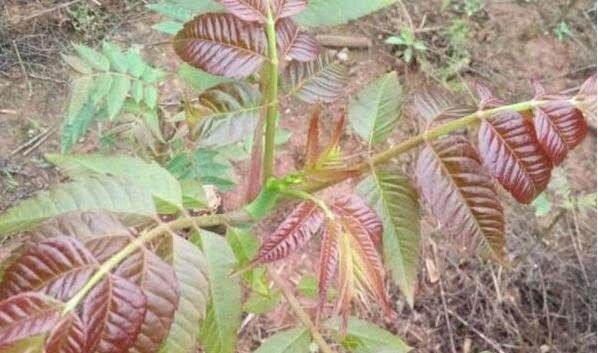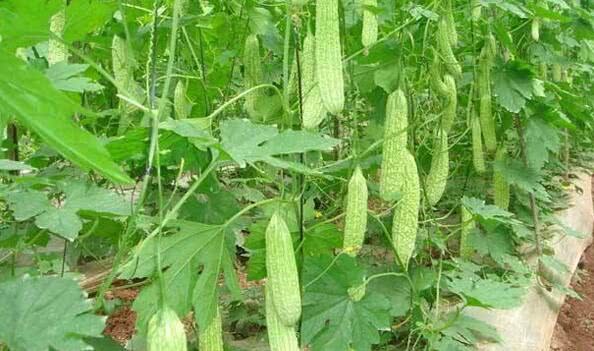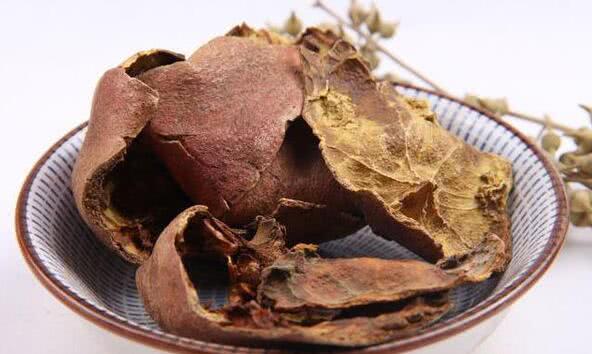When is the seed planted? High-yielding planting and management techniques of Toona sinensis

How to achieve high yield cultivation of Chinese toon planting? Toona sinensis can be said to be one of the more and more popular wild vegetable varieties in recent years. The rich nutrition of Toona sinensis accords with the health consciousness pursued by people at present, and it also has the function of dietotherapy. Let's learn the planting techniques of Chinese toon together.
1. Propagation techniques of Toona sinensis
There are seed seedlings, stem cuttings, root cuttings and root propagation.
1.1 raising seedling
Toona sinensis seeds are small, hard seed coat, long wings with membrane, direct seeding is not easy to absorb water, germination is difficult, in order to obtain neat emergence, seed germination treatment needs to be carried out before sowing.
Its method:
Soak seeds in warm water.
in early March, soak that seeds in warm wat of 30 - 40 DEG C for one day and night, taking out the seeds aft absorbing enough water, putting the seeds into bullocks, placing the seeds at 20 - 25 DEG C for germination, watering once a day in the morning and evening, turning over evenly, and sowing when more than 50% of the seeds are exposed to white.
germination
Mix the seeds and river sand according to the ratio of 1:2, and sprinkle water properly. The humidity should be grasped by hand and dispersed. The seeds mixed with sand are stacked together in a steamed bun shape, poured with a little water every day, and overturned evenly from time to time. When the seeds are 70% white, they can be sown.
1.2 stem cutting
After autumn defoliation to April ~ May of the following year, select 1~2-year-old branches, cut them into 20cm long cuttings, insert them into the whole seedbed according to the row spacing of 25×15 cm, and expose one third of them on the ground.
1.3 rooting propagation
When transplanting and transplanting, cut off the main and lateral roots of the plants, cut them into 15~20cm segments, in the whole seedbed, ditch about 7 cm deep according to the row spacing of 25 cm, plant the roots horizontally in the ditch, the spacing is 10 cm, the above soil is compacted, watering, when the seedling height is 10 cm, remove the tillers in time, and pay attention to intertillage and weeding.
1.4 Rooting propagation
There are many adventitious buds in the root of Chinese toon. In natural environment, some young seedlings often sprout around the crown, which can be excavated and transplanted to cultivate new plants. But natural sprout tiller is limited, can adopt artificial root to cut tiller to carry on propagation. The method: after thawing in early spring, before germination, there is a crown outer edge, dig a groove of 50~60 cm, cut off the root end slightly, fill the groove with soil, so as to stimulate the root tip to form a large number of tillers, germinate new plants, and transplant in the following year.
1.5 seedbed preparation
Select flat terrain, fertile soil, good drainage of sandy loam do seedbed, apply enough organic fertilizer 4000 kg, spread evenly ploughing, fine, flat, 1.2 meters wide for the ridge, deep ditch high moisture. Seed sowing, according to the row spacing of 20 cm, open shallow furrows of 5 cm, irrigate sole water in the furrows, after infiltration, spread the seeds that have promoted good buds evenly in the furrows, use 1.5~2 kg dry seeds per mu, cover 2~3 cm of soil, then cover the furrow surface with plastic film, cover tightly and compact, so as to improve the ground temperature and early emergence.
1.6 seedling management
After the seeds are sown, the mulch is removed immediately in the evening and watered lightly once, paying attention to keeping the ridge surface moist.
Thinning and homogenizing seedlings in time, removing over-dense seedlings, combined seedlings, weak seedlings and sick seedlings, keeping plant spacing of 3~5 cm, removing weeds in the field, topdressing 10 kg diammonium phosphate per mu, watering once permeable, shallow loosening, and paying attention not to damage roots.
Thinning seedlings and transplanting. From late May to early June, when the seedlings have 4~6 true leaves and 8~10 cm high, in order to improve the light and soil nutrition conditions of the seedlings, it is necessary to transplant the seedlings according to the distance of 10~15 cm, and master the principle of keeping strong and weak, keeping strong and thinning. One day before thinning seedlings, irrigate the ridge surface thoroughly to make the plucked seedlings hurt roots as little as possible. The seedlings are transplanted to the adjusted seedbed in time according to the row spacing of 25×15 cm, and irrigate the root water to promote the survival of the seedlings.
After transplanting live trees and cutting propagation into young plants, timely dressing fertilizer, intertillage weeding, promote seedling growth. At the later stage, measures such as topping, spraying paclobutrazol or fertilizer and water management were adopted to control plant height, adjust plant shape, increase nutrient storage of seedlings and promote the formation of plump terminal buds.
II. Planting of Toona sinensis
After defoliation to the next spring before germination can be planted. Before planting, apply decomposed organic fertilizer 4000kg per mu, spread evenly and deeply till, plant 2~ 2.5m in width, plant according to row spacing of 60~70×15~ 20cm (dwarf and dense planting), 6000~8000 plants per mu, and the highest number is more than ten thousand plants. After planting, timely irrigation of sufficient root water to promote living trees.
III. Field management
3.1 fertilizer and water
After planting live trees, timely dressing fertilizer and water, combined with intertillage weeding, promote rapid growth of seedlings.
3.2 bingchong prevention
Toona sinensis pests, there are Chinese toon caterpillar, thorn moth, cloud spot longicorn, larval stage can be sprayed with 800 times trichlorfon solution, adult stage can be controlled with 1500 times dimethoate. Diseases include leaf rust and powdery mildew, which can be controlled by 500 times triadimefon. Clean the countryside in winter and reduce the overwintering base of pests and diseases.
3.3 pruning
Every spring after the end of the harvest of Chinese toon buds, in June, late to early July, the trunk 20 cm above the ground pruning (beheading), to promote the germination of lateral buds into new branches. From late July to early August, according to the strength of new branch growth, topping can be carried out in advance for strong growth, on the contrary, topping can be postponed, and combined with fertilizer and water management, promote the formation of full terminal buds. Toona sinensis bud growth period is short, should eat early, eat fresh, eat tender, there is a saying "before rain, Chinese toon bud tender as silk, after rain, Chinese toon bud as wood."
Harvesting criteria: bud color purple, bud length 10~15 cm. When harvesting should first pick the terminal buds after lateral buds, if the terminal buds are not harvested, the lower lateral buds are difficult to grow or grow poorly. When picking buds, gently pick them at the base of petiole, bundle them into small bundles of 100~200 grams, seal them with plastic bags, prevent water loss and wilting, and improve the quality of listing. Each year, it can be harvested 3 - 4 times, with a yield of 400 - 500 kg.
IV. Protection measures for Chinese toon overwintering
After defoliation in autumn, the transplanted Chinese toon plants are dug out with roots, one bundle for every 50 plants, the roots are watered with mud, and the plants are planted in the shade. The method: dig a ditch with a depth of 50 - 60 cm and a width of 50 cm behind the house in the middle and late November, obliquely erect the tied plants in the ditch, fill the roots with soil, irrigate once with water to penetrate to the bottom of the ditch, keep it moist later, and pass the dormant period after about 15 days of low temperature. Then planting in the prepared greenhouse (row, plant spacing the same as above). The temperature in the shed is kept at 18~24℃ during the day and 12~14℃ at night. After 40~50 days, the first batch of Chinese toon buds can be harvested and marketed. Fertilizer and water management should be strengthened in protected cultivation to improve the yield of Chinese toon buds.
V. Processing, curing and storage
After processing and curing, Chinese toon sprouts can be stored for a long time and transported out at any time. The method is simple and feasible. Fresh Chinese toon buds are collected and washed with water. After drying, 20 kg of salt is added every 100 kg. There is a layer of Chinese toon buds in the jar, and a layer of salt. The lower layer is less than the upper layer. After 3~4 hours, turn the jar, and after 5~6 hours, turn the jar for the second time, totally turn 5~6 times, marinate it for about 20~30 days, take it out and spread it for 1~2 days, add a small amount of rice vinegar to increase the luster and crispness, and then dry it to 5~ 6%, tie it into a small handle every 100~150 grams, put it into a small jar, squeeze it tightly, seal it and store it for 2~3 years.
- Prev

Does balsam pear cultivation want to be high-yield?
Generally speaking, if you want to grow balsam pear with high yield, fertilization is very important. More or less will affect the yield of balsam pear, so vegetable farmers must master the main points of fertilization of balsam pear.
- Next

Which chicken diseases can be treated with pomegranate peel? A secret recipe for raising chickens that should not be missed by chicken farmers.
Autumn pomegranate on the market, this time is a good time to eat pomegranate, pomegranate refreshing sweet and juicy, many people like to eat. When it comes to eating pomegranates, we know that they only eat pomegranate seed meat, and most of the pomegranate skins are thrown away directly. But actually the pomegranate skin.
Related
- Wuhan Hospital Iron Tree Blooming Result Was Instantly Frightened by the Gardener Master
- Which variety of camellia is the most fragrant and best? Which one do you like best?
- What is the small blue coat, the breeding methods and matters needing attention of the succulent plant
- Dormancy time and maintenance management of succulent plants during dormancy
- Minas succulent how to raise, Minas succulent plant pictures
- What are the varieties of winter succulent plants
- How to raise succulent plants in twelve rolls? let's take a look at some experience of breeding twelve rolls.
- Attention should be paid to water control for succulent plants during dormant period (winter and summer)
- Watering experience of twelve rolls of succulent plants
- Techniques for fertilizing succulent plants. An article will let you know how to fertilize succulent plants.

